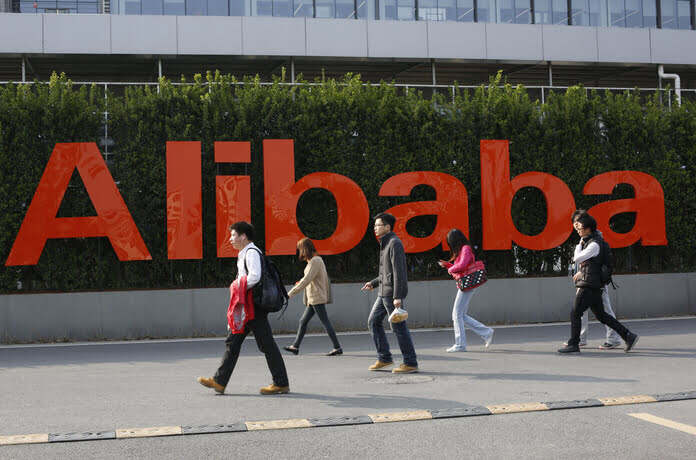Alibaba Group Holding Ltd (NYSE:BABA)
Sellers have pushed Alibaba (NYSE:BABA) below its 10-week moving average following a bullish move-off low. Although the decline has been low-volume so far and BABA stock appears to be on sale once more, should investors buy Alibaba stock?
The news that the Alibaba Dharma Academy, a research center with a focus on science and technology, is developing a ChatGPT-like dialogue robot caused the price of Alibaba to increase by 3% on February 9. But due to market weakness as a whole, Alibaba stock gave back early gains.
On January 30, traders heavily discounted Alibaba stock following news that the company would be relocating its headquarters abroad. At the time, Alibaba confirmed that a new campus is being built in Singapore. BABA, however, claimed that the building would house regional operations.
On January 13, buyers drove the price of Alibaba stock higher after learning that China had acquired a small stake in a Guangzhou-based Alibaba division. The news was released two days after Barclays increased its price target from 114 to 141 while maintaining an overweight weighting on Alibaba stock.
On January 9, the news that Alibaba co-founder Jack Ma had given up control of the fintech Ant Group, which had been the target of Chinese regulators, helped the stock of Alibaba extend its winning streak to five sessions. Friday marked the end of Ant Group’s investigation, according to China’s central bank. As a result, Ant is now eligible to submit an application to become a fully licensed financial holding company.
Regulator apprehensions for Chinese stocks like Alibaba, however, have decreased. According to a senior Chinese regulator, investigations into internet platform providers like Alibaba are almost finished.
After Goldman Sachs included Alibaba on its list of buys with conviction, sentiment in the stock of Alibaba was also positive on January 9.
News Regarding Alibaba
For its Nov. 11 Singles Day, the biggest annual shopping event in the world, Alibaba and JD.com (JD) did not disclose specific gross merchandise volume. Alibaba acknowledged that the volume was similar to the same period last year when the company reported a gross merchandise volume of $84.5 billion, an increase of more than 8%. However, that marked a significant slowdown from the 26% growth in 2020.
After the Biden administration announced new limitations on China’s access to American semiconductor technology, including limitations on the exports of some types of chips used in supercomputing and artificial intelligence, sentiment surrounding Chinese stocks was negative in October. Additionally, it tightened regulations on the export of chip equipment to China.
Late in August, reports that Beijing and American regulators were close to reaching an audit-inspection agreement caused the price of Alibaba to surge sharply.
Alibaba was added by the U.S. Securities and Exchange Commission to a list of Chinese companies at risk of delisting in late July for failing to open their books to American accounting regulators.
On June 17, Alibaba stock increased, but early gains were erased after Reuters reported that Ant Group’s application to establish a financial holding company had been approved by China’s central bank.
Chinese authorities put a halt to the $34.5 billion Ant Group IPO in Shanghai and Hong Kong at the beginning of November 2020. Ant Group is Alibaba’s fintech division. The IPO was suspended after Shanghai exchange officials announced that the listing would be halted because the company was unable to meet the requirements due to changes in the regulatory environment.
Recent Income
The following earnings report from Alibaba is due on February 23 at the opening. A 14% decline in adjusted profit to $2.28 per share is anticipated, along with a 7% decline in revenue to $35.36 billion.
BABA said it is expanding its share buyback program by $15 billion as part of its Nov. 17 earnings report, which showed adjusted profit up 5% year over year to $1.82 a share but revenue down 6% to $29.1 billion. On top of an ongoing $25 billion program, that. The business claimed that as of Nov. 16, it had already repurchased $18 billion worth of stock through its current program.
Early in August, Alibaba announced fiscal first-quarter revenue of $30.7 billion, down almost 4% from the same period last year but slightly higher than the $30 billion consensus. A share-based adjusted profit of $1.75 was higher than the $1.58 consensus.
China commerce for Alibaba decreased by 1% to $21.19 billion. Revenue for the company’s cloud division was $1.59 billion, up 10% from the previous year.
Vendors Attack BABA Stock
Alibaba and other Chinese stocks have been under increased regulatory scrutiny for the past few years. In addition to a strict regulatory environment, a slowing economy has been a problem for Chinese stocks.
Following an antimonopoly investigation, China’s regulators fined Alibaba $2.8 billion in April 2020. At the time, it appeared as though BABA stock was about to reverse its downward trend. But the stock got turned away at its 50-day moving average. Late in April, it attempted to rise above the 50-day line once more, but sellers drove the stock lower.
After Chinese regulators unveiled new draft antimonopoly rules for China’s online marketplaces, including JD.com and Alibaba, among others, BABA stock fell another 8% on Nov. 10.
Fundamental Analysis of the Alibaba Stock
Alibaba has a more successful track record of growth than most businesses. Although earnings have decreased for four consecutive quarters and revenue growth has slowed, the company has experienced annualized earnings growth of 15% over the past five years.
Is BABA Stock A Buy Right Now?
Alibaba’s overhead supply problems remain a concern as the stock is still below its high of 125.84 in July. In late January, the price of Alibaba stock increased to 121.30 before declining.
On November 15, the BABA stock made a significant move above the 50-day line, ending its downtrend and sending a buy signal. However, the stock started to appear overbought after rising 19% during the week ending December 2.
During the week ending January 6, Alibaba stock again experienced a breakout on the same day that the Nasdaq composite and S&P 500 marked follow-through days.
If Alibaba stock can rise above its 10-week moving average, which is currently just above 103, it won’t be far from an alternative entry (see weekly chart).
Featured Image: Megapixl @ Minipig5188









